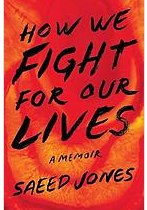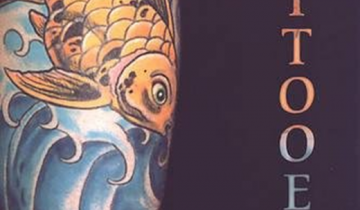Can Trans Literature Stand on Its Own?
Judi Tichacek
With the emergence of trans lives in our American pop culture — Caitlyn Jenner’s new show I am Cait starting up on the E! Network, the popular Orange is the New Black kicking off its third season, and Twitter casting light on trans murders happening across the country — it seems like trans issues are getting the public exposure to tell their stories and, most importantly, educate those who want to learn more. But are they? Author Jen Richards exclaims to us through the magazine pages that “the Trans movement isn’t just a convenient narrative, it is a dangerous lie”. If there isn’t a trans movement, then does that mean trans stories – those in print and elsewhere – are left in the dust?
In general, the term ‘transgender’, as Heather Love cites in the chapter “Transgender Fiction and Politics” from the Cambridge Companion to Gay and Lesbian Writing, is “now generally used to refer to individuals whose gender identity or expression does not conform to the social expectations for their assigned sex at birth” but the author also states that it is used to identify a commitment to “living between the sexes.” The word itself, however, becomes problematic when it’s used as an “umbrella term encompassing all forms of gender variance.” Among the examples, Love lists “butch”, “transsexual”, “cross-dresser”, “drag queen/king”, and many others. Because so many variations can exist under the term, it tends to be difficult to make trans literature appealing because it is not as focused as, for example, gay or lesbian fiction.
If you’ve read Lambda Literary’s 2010 article, “Is There, or Should There Be, Such a Thing as Trans Lit?,” you’ll find that the main problem in the past has always been the ‘lumping in’ with other general areas, like queer studies or feminism. But the author Cheryl Morgan makes another interesting point: there are just too many different areas to cover without making broad overgeneralizations. As Morgan writes, “the trans community is very diverse, and different parts of it have very different needs”; one could also extend this concept to books and other publications. This includes (for example): some only want to read about cross dressing characters, the pre-op experience and how it relates to the actual reader, post-op readers who might not identify with the trans community because they are completely comfortable with their chosen gender, and others might not yet be comfortable and take longer time to adjust to their new gender. Now, I understand that you cannot please everyone. But as we are using “trans” as that dreaded umbrella term, it is difficult for trans literature to make a name for itself.
If we go back to the Advocate article, there seems to be a paradox forming. While it’s difficult to appeal to all of the subcategories of what “trans” defines, it is the variations that make trans stories unique – it is all about these different individuals and their own individual experiences. As Richards writes, “there isn’t a trans movement, or a trans community, but rather multiple movements and communities, divided not only by race and class but also distinct histories, leaders, resources, and needs. There are of course some goals, challenges, and victories shared by all. And though there are many exceptions, the lived experiences of most trans people fall into broad camps.” So knowing this, how can trans literature even have a chance if this diversity is paramount to the trans experience?
Well, the answer is a difficult one. There are definitely are other factors to consider here. If one were to look at the incidence of transgender characters in modern fiction from larger publishers, one could say that the numbers are increasing, albeit slowly. Trans protagonists started to emerge alongside the sexual revolution of the 1960’s. Gore Vidal introduced us to Myra in Myra Breckinridge, and about a decade later Armistead Maupin brought the motherly Anna Madrigal alive in the Tales of the City series. From then on, transgender characters have since been slowly gaining momentum. In the 2000’s, we’ve started to see not only more trans characters but appearances in YA and children’s literature, which is a huge breakthrough overall.
Yet, another problem that Morgan also alludes to in her article is that we do not see trans lit from the trans authors themselves. A majority of the titles from larger publishers that include trans characters are from well-known privileged authors such as Jeffrey Eugenides and Haruki Murakami. While there are independent presses that support trans writers and their projects such as Trans Genre Press, most of these books do not get the exposure and publicity they need.
That being said, a lot needs to happen. But instead of us wanting trans literature to be a legitimate genre, we should be refocusing on the single trans voice. Publishers and authors alike should be advocating for fellow trans authors and their works. Authors should pursue alternative publishing or self-publishing to get their works out in the public eye. Initiatives like Diversity in YA and the We Need Diverse Books campaign should be applauded and supported. Richards concludes in her article, “[t]here is a crisis facing trans people, and the response will need to be as intersectional, sophisticated, and persistent as the causes. There doesn’t need to be a singular trans movement to rise to that challenge.” By hearing individual trans voices as a collective, we can start to understand the trans experience in its entirety and do justice by those diverse voices. We can begin to give visibility to those who want it.
Works Cited:
Love, Heather. “Transgender Fiction and Politics.” The Cambridge Companion to Gay and Lesbian Writing. Ed. Stevens, Hugh (ed. and introd.). Cambridge, England: Cambridge UP, 2010. 148-164. Cambridge Companions to Literature. MLA International Bibliography. Web. 21 Aug. 2015.
Morgan, Cheryl. “Is There, or Should There Be, Such a Thing as ‘Trans Lit’?” Is There, or Should There Be, Such a Thing as Trans Lit? Lambda Literary, 25 Feb. 2010. Web. 20 Aug. 2015. <http://www.lambdaliterary.org/features/02/25/is-there-or-should-there-be-such-a-thing-as-trans-lit/>.
Richards, Jen. “What Trans Move-Ment?.” Advocate 1080 (2015): 36-41. Academic Search Complete. Web. 1 Sept. 2015.



Thiis info is invaluable. When can I fimd oout more?
Thanks for finally talking about >Can Trans Literature Stand on Its Own? – GLBT Reviews <Loved it!
this is outstanding